Two-time husband Harry Crawford exposed as a woman, Eugenia Falleni, and convicted of murder
WHEN Harry Birkett discovered that his step-father was a woman, he saw the sudden disappearance of his mother in a new - and heinous - light. For Eugenia Falleni, who had lived for years as Harry Crawford, the biggest horror was being unmasked to an unsuspecting second wife.
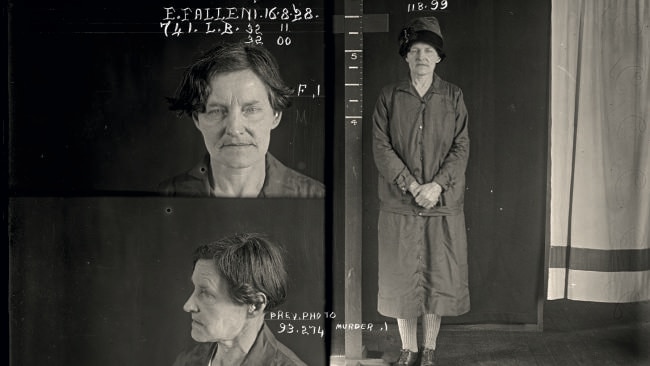
True Crime
Don't miss out on the headlines from True Crime. Followed categories will be added to My News.
A SHOCKING discovery by a young boy about the true gender of his step-father led to an extraordinary chain of events in NSW in the early 1920s, culminating in the arrest of Eugenia Falleni for murder.
In this extract from Eugenia, author Mark Tedeschi QC reveals how Falleni - who lived as Harry Crawford - was arrested for the killing of one wife, to the horror of a second, and the ruse that kept both women ignorant that their "husband" was actually a woman.
For two-and-a-half years, Harry Birkett had been too preoccupied with the demands of daily existence to concern himself with searching for his mother, who had vanished from his life without warning during the Eight-Hour Day long weekend in October 1917.
After spending a few weeks following her disappearance living in boarding houses with Harry Crawford and a few months at the home of Mrs Marcellina Bombelli, in mid-1918 Harry Jnr went to live with her son, Frank Bombelli, in Sans Souci.
It was in Frank Bombelli’s home in about April 1920 that Harry Jnr was told something so extraordinary that he was finally prompted to inquire into what had happened to his mother.
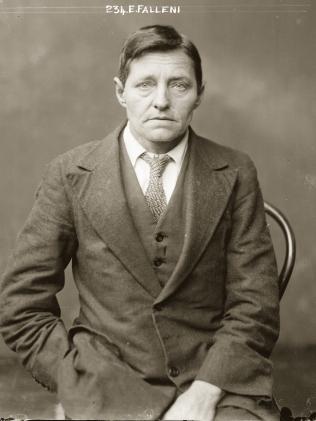
Frank Bombelli told him that Harry Crawford was really a woman called ‘Nina’ dressed as a man, and that Marcellina Bombelli knew Nina’s Italian family in New Zealand.
Frank had known this information for a long time, having been told years earlier by his mother, but when the 14-year-old boy first moved into his home he had thought that it was inappropriate to tell him such scandalous details.
However, by the time Harry Jnr was seventeen, Frank considered him old and mature enough to be told the truth.
True Crime Australia: Bank robber turns his tale into Hollywood gold
Our criminal history: The MP who became a psycho killer
When Harry Birkett was finally given this astounding piece of information about his former stepfather, he was seized by a sudden panic about his mother’s fate.
He thought back to the last eight months of their family life before his mother’s disappearance in 1917, and he could now see that there had been an abrupt change in her attitude to her husband during that time.
His mother’s actions made more sense to a young man than they had to an adolescent boy. He was overwhelmed with guilt that he had meekly accepted the pathetic explanation that his stepfather had given him on that first evening after he had returned from Collaroy.
He vividly recalled the extraordinary journeys to The Gap and Woollahra that his stepfather had dragged him on in the first week after his mother’s disappearance.
In a moment of sudden, shocked revelation that hit him like an unexpected punch to the solar plexus, he abruptly remembered when Harry Crawford had asked him at Mrs Schieblich’s lodgings to read an article about an unidentified, burned body that had been found in the Lane Cove River Park some days earlier, and he replayed in his mind the strange emotional reaction he had witnessed in his stepfather.
Over some days, Harry Birkett became utterly convinced that his mother had been murdered by Harry Crawford over the Eight-Hour Day weekend and that the body that had been found near the Cumberland Paper Mills was hers. He became determined to uncover his mother’s fate, no matter what it might have been, and, if she had been murdered by his stepfather, to bring him to justice, whether he was a man or a woman.
With this in mind, Harry Birkett sought out his aunt, Lily Nugent, whom he had not seen in about three years. He went to see her at her home in Kogarah to tell her of his grave suspicions. Lily was very pleased to see her nephew after such a long absence, but when he informed her that he hadn’t seen or heard from his mother since the beginning of October 1917, Lily became terribly distressed and concerned about the fate of her sister.
Harry Junior told his aunt of his suspicions, and each of them disclosed to the other what they had heard about Harry Crawford’s gender. Harry Jnr told Lily that he had heard from the Bombelli family that Harry Crawford was really a woman called Nina from an Italian family living in New Zealand.
Lily told Harry Jnr that during a visit by Lily to Drummoyne shortly before the disappearance, Annie had told her that Harry was ‘not a man’. As Harry Jnr and Lily discussed Annie’s disappearance, they fed off each other’s suspicions until Lily quite independently came to the same view as her nephew — that her sister must have been murdered by Harry Crawford.
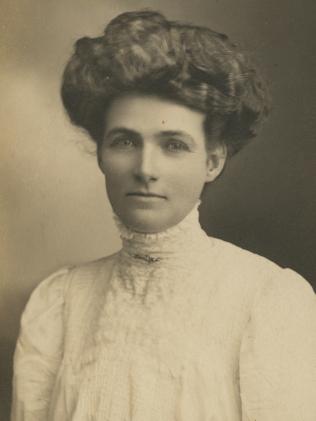
Harry Jnr and Lily determined then and there that they would report Annie to the police as a missing person, that they would tell the police of the suspicions they harboured about Harry Crawford, and that they would inform the police of the strange facts they had been given about his gender, his Italian origins and his New Zealand family.
In May 1920, Harry Birkett and Lily Nugent attended the Criminal Investigation Branch of the New South Wales Police, which was situated on the upper floors of the multistorey Central police station in Central Street, Sydney, 1 to report Annie Crawford as a missing person.
They were interviewed by Detective Sergeant Stewart Robson, who assumed the role of chief investigator. Harry Jnr told the Detective Sergeant as many of the circumstances as he could recall about the strange fortnight after his mother had disappeared.
This included mention of the article in the newspaper about the body that had been found in the Lane Cove River Park around the time his mother had disappeared and his strong suspicion that the body could be his mother’s.
Harry Birkett and Lily Nugent also told Detective Robson what they had heard about Harry Crawford’s real gender and his origins in an Italian family in New Zealand.
Detective Robson was naturally intrigued at this extraordinary information, and resolved that, if it was true, he would use it to his advantage during the investigation. He asked them both to come back to see him several weeks later, by which time he would have been able to ascertain what evidence still remained from the original police investigation in 1917, and they could then make formal written statements.
It was an easy task for Detective Sergeant Robson to locate the police documentation about the investigation in 1917 of the body that had remained unidentified. He simply called for the file and exhibits, which had been retained at the Chatswood police station.
In mid-June, several weeks after their initial visit, Harry Jnr and Lily again attended the Criminal Investigation Branch, where Detective Robson showed them the jewellery, shoes, enamel cup, picnic basket, and the small piece of gabardine material that had been recovered from the park.
Each of them was able to readily identify various items as having belonged to Annie. Harry Jnr told the detective that not only were the shoes similar to ones that his mother had owned, but that the patches were very similar to ones that had been applied to his mother’s shoes by his stepfather.
At long last, more than two-and-a-half years after Annie’s death, there was sufficient circumstantial evidence to conclude that the body was hers.
Detective Sergeant Robson took formal statements from his two witnesses. He deliberately did not include in their written accounts the information about Harry’s gender and origins, but kept this up his sleeve so that he could use it as a potentially powerful investigative tool.
He would later present it in an unduly self-complimentary way that suggested it had only emerged because of his comprehensive and exemplary skills as a detective.
He also created the impression that it was excellent investigative work by the police that had linked the finding of the body in 1917 with the 1920 report of Annie Birkett’s disappearance, rather than attributing this connection to Annie’s son.
The task of further investigating Annie Birkett’s death now fell to the police under the leadership of Detective Sergeant Robson. The sergeant had available to him the information that had been presented to the Coroner in 1917, including the autopsy report that stated that there were no signs of violence.
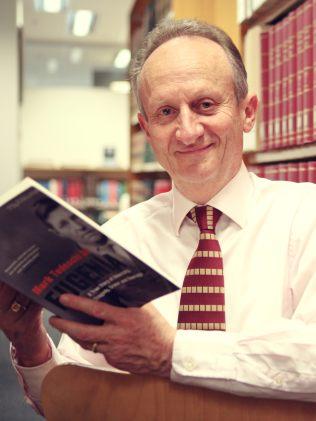
Despite this finding, it does not appear that the police engaged in any further inquiries before deciding to arrest and question Harry Crawford. For Detective Sergeant Robson, the information he already had from Harry Birkett and Lily Nugent was sufficient to make the decision to arrest Harry Crawford. Robson thought that there was a good chance that, on being confronted with what the police already knew, Harry Crawford might confess to the murder of his wife.
The decision to adopt this course of action — trying to prompt a confession from their suspect — was made in the belief that if Harry did admit to the murder, it would make the police investigation much more straightforward and require far less laborious police legwork.
This was a common approach by the police to the prospect of an involved and protracted investigation. A calculated decision was therefore made to delay any further police investigations until after Harry Crawford had been interviewed.
At about 11.30am on Monday 5 July 1920, two men in dark suits and grey felt hats went to the Empire Hotel on the corner of Parramatta Road and Johnston Street in Annandale, where Harry was working as a general hand.
They came up to the licensee’s office, where Harry was sitting during a break, and Robson began: ‘I am Detective Sergeant Stewart Robson and this is my colleague Detective Watkins. What is your name?
Although Harry did not initially know the purpose of the visit by these two officers, any confrontation with the police was sufficient to raise his level of stress and fear. As a highly experienced police officer, Sergeant Robson immediately detected that rise in tension and his instinct was to exploit it to his advantage.
After asking his name, the sergeant asked, ‘How long have you been working here?’ to which Crawford replied, ‘A few weeks.’
Sergeant Robson then asked him, ‘What nationality are you?’ This was ostensibly a strange question for Robson to ask at this early stage, but understandable if one knew what Harry Jnr had told him.
Crawford’s response was to ask the detective, ‘What do you want to know that for?’, to which the policeman replied, ‘I believe you are an Italian.’ Crawford said, ‘No, I am a Scotchman and was born in Edinburgh.’
Robson said, ‘I have my doubts about you, and I am going to take you to the Central Court or the Detectives Office to make further investigations.’ The moment that Harry Crawford had dreaded for so many years had finally arrived.
In a legal sense, Robson was deliberately vague as to whether or not Crawford was then under arrest, although his suspect would clearly have thought he had no option but to accompany the police to wherever they wanted to take him. The law provided that if Detective Sergeant Robson was going to arrest Crawford, he was under an obligation to take him to the Central Police Court at the ‘earliest reasonable opportunity’.
At this hour, around the middle of the day, there was clearly no impediment to meeting this requirement of the law, as the Central Police Court in Liverpool Street, contiguous to the Central police station, would still have been in session. However, instead of taking Harry Crawford to the court, Detective Sergeant Robson took him to the Criminal Investigation Branch offices at the Central police station. No doubt, if Robson had been queried about this diversion, he would have asserted that Crawford was not under arrest and had voluntarily accompanied them to the police station for questioning.
The Central police station in Central Street functioned as Sydney’s police headquarters. It was situated in the Haymarket area about a mile from the business district of the city.
Although Haymarket was not the commercial centre of Sydney, it was definitely the retail centre. Within two blocks of the police station, there were two enormous emporiums or department stores: Anthony Hordens and Mark Foys.
Several blocks further away were Sydney’s two main produce markets: Paddy’s market and the markets of the Queen Victoria building. A mile away on Broadway, past the Central Railway Station, was the Grace Brothers Department Store.
The main entrance to the Central police station was through a grand archway, which incongruously faced onto Central Street, an unimpressive, narrow laneway between George Street and Pitt Street.
The police station, which backed onto the rear of the Central Police Court in Liverpool Street, consisted of a central courtyard where police vehicles could load and unload prisoners who were due to appear in the adjoining courts, surrounded by a multistorey building which housed the Criminal Investigation Branch and numerous other specialist police departments. When one came through the impressive main entrance, there was a public inquiry room on the left side.
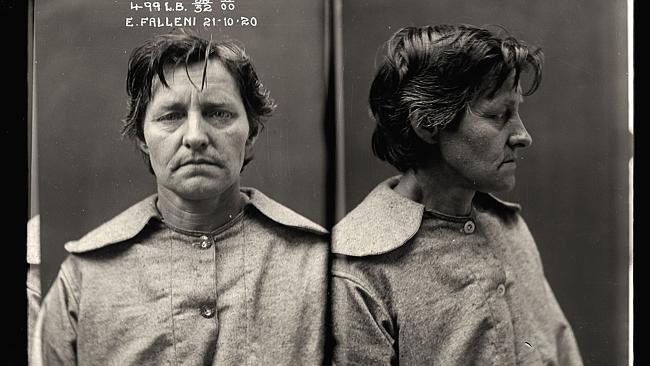
On the right side, behind a locked door, was the ‘charge room’ where police would process those who were charged with committing crime. Above ground, the station consisted of a multi-storeyed series of police offices, corridors and interview rooms.
Below ground, and accessed via the charge room, was a rabbit warren of underground cells that connected to the adjoining Central Police Courts in Liverpool Street.
When one entered the Central police station through the grand archway, one crossed into a totally alien environment that had its own processes and protocols.
Harry Crawford was escorted to the third-floor offices of the Criminal Investigation Branch. He was introduced to Superintendent Bannan, who was the officer in charge.
With the authority of his office and his superior age supporting him, the Superintendent said to Crawford: ‘These officers, Robson and Watkins, have been enquiring for some days about a matter which we think concerns you a great deal.
And what I want to know is whether you are willing to make a statement setting out your social relations with different people since you have been here, where you have been working, and people that you know generally.
You will be taken out to the top room and you can make your statement there. But, before you do go, I wish you to thoroughly understand that the statements that you do make shall be absolutely voluntary.’
Crawford replied, ‘All right.’
Crawford was then taken to one of a series of small interview rooms on the top floor of the police station. A formal statement was then typed out by a police typist based on Crawford’s answers in response to Sergeant Robson’s questions. After the statement had been completed, Sergeant Robson invited Crawford to read it.
Despite the fact that Crawford was illiterate, he gave the appearance of reading the document, and then signed it. The statement contained numerous lies about his origins and personal history and, most importantly of all, stated that he had been a single man all his life until marrying Lizzie Allison in September 1919.
Following the making of the statement, Sergeant Robson left the interview room for five or ten minutes and then returned to inform Crawford for the first time that he had interviewed Harry Birkett and Lily Nugent and that he had reason to believe that Crawford had married Harry Birkett’s mother some years earlier.
Sergeant Robson also told Crawford that he proposed to produce Harry Birkett in his presence, and he gave Crawford the option of an identification line-up with other people if he wished. Crawford declined the offer, saying, ‘I don’t want to be lined up with a lot of other people. I have got enough worry on my head at present.’
There then followed a most extraordinary exchange between Sergeant Robson and his unsuspecting and disadvantaged suspect, who did not know the extent of the Sergeant’s knowledge about his identity.
Sergeant Robson skilfully used the information he had been given by Harry Birkett and Lily Nugent to unbalance his suspect and to push him into a corner from where, Robson hoped, he could only escape by making admissions. According to the police, it went like this:
Robson: You still say that your name is Harry Crawford and you were born in Scotland?
Crawford: Yes.
Robson: Have you any marks about your body that will assist in identifying you as a Scotchman and where you say you were born?
Crawford: No.
Robson: Strip off a little and let me see.
Crawford: No, I object to that.
Robson: Very well, the government medical officer is in this building — Dr Palmer. Would you care to go before him?
Crawford: I do not mind.
Robson then took Crawford to Dr Palmer’s office, nearby in the same complex. By this stage, Harry Crawford was in a complete panic. He had no idea what evidence the police had to link him to Annie’s death.
Unbeknown to him, there was in fact very little. Robson was playing a very nimble game of cat-and-mouse. Crawford had a flashback to the time many years earlier when, as a sailor on the Norwegian barque, he had been caught out and exposed, and he shuddered with horror at the memory of the terrifying ordeal that had followed.
He was fearful that the police were intending to charge him and that he would be sent straight to a men’s jail where he would again be viciously raped. He was prepared to do anything to avoid a repetition of the terrible, violent invasion of his body suffered all those years ago.
However, when confronted with Dr Palmer, Crawford could not bring himself to disrobe, and so he objected to the doctor examining him. Robson then took Crawford back to the interview room, and their conversation continued:
Crawford: I suppose now I will have to go to jail?
Robson: I am not quite sure about that yet, at the present juncture.
Crawford: What do they do with you when they take you to jail?
Robson: Well, I’m not quite familiar with their methods, but I think they first give you a good bath and a change of clothes.
Crawford: Well, I want to go into the women’s ward.
Robson: Oh, not quite. No chance of that.
Crawford: Come here. I want to tell you something (calling Robson away from the typist). I want to tell you that I am a woman and not a man.
Robson: Well, I can only take you as you appear to be, dressed as a man, and that is a matter entirely for the doctor.
Crawford: Is the doctor here now?
Robson: Yes, he is still there.
Crawford: Well, can I go and see him?
Robson: Yes.
Robson again took Crawford to see Dr Palmer and, in Robson’s quite intrusive presence, Crawford disrobed a little and told the doctor that he was a woman. After an examination that required a mere second or two, Dr Palmer declared that Crawford was indeed a woman. Robson and Crawford then returned once again to the interview room, where the conversation continued:
Crawford: This is a terrible thing for me, and the worry of my life.
Robson: Well, we are going out to your place now, where you say your wife is, and I am going to make a little search.
Crawford: (desperately pleading) I do not want you to let her know anything.
Robson: What, do you mean to say that she has not found out anything since you have been living with her?
Crawford: No, she does not know anything.
At that point, Robson brought Harry Birkett into the room. The young man immediately identified Crawford as the man who had married his mother years earlier, and promptly left the interview room without the slightest acknowledgment of his stepfather. Robson then offered to read Harry Birkett’s statement to Crawford. After reading it to him, their conversation continued:
Robson: How is it you never mentioned anything to me about this first wife, that is explained in the statement?
Crawford: Oh, you have it all now. You have got as much as I could tell you. I did not want to say anything about it. She had been drinking a great deal, a source of worry to me, and she had been going with other men.
There then followed several further questions about the circumstances of Annie leaving home in 1917. Robson then informed Crawford that he and the police would go to where he was living with his present wife, in order for the police to conduct a search.
Robson at this stage still maintained a deliberate obfuscation about whether Crawford was under arrest and whether he was compelled to accompany them to his home. Crawford had still not formally been placed under arrest, but neither had he been told that he had a choice whether or not to accompany the police to his home.
By this stage, Crawford was feeling quite terrified and thoroughly confused at his predicament. He was horrified at the thought that Lizzie, whom he dearly loved, might discover his true identity and the reality of their lovemaking.
He firmly believed that if she did find out, their relationship would disintegrate, just as had the one with Annie. More than anything else, he wanted to protect Lizzie’s feelings.
Detectives Robson and Watkins then took Crawford to his home at 47 Durham Street, Stanmore. When they arrived, Detective Robson introduced himself to Lizzie, told her that they were investigating a murder and informed her that they were going to search the house.
Lizzie began to cry, and continued crying for the whole time that they were there. The two police officers, with Crawford in tow, went into the main bedroom, where the police commenced to search. Crawford felt completely defenceless and overwhelmed by his overriding concerns for Lizzie, who was crying in another room.
In one corner of the bedroom there was a large, handsome, solid leather portmanteau inscribed in gold letters with the initials ‘HLC‘.
Detective Robson walked across the room as if to open the portmanteau, when Crawford interrupted him:
Crawford: Let me open the bag and I will give you something that is in it.
Robson: No, I could not do that.
Crawford: Well, don’t let the wife see it.
Robson: What is in the bag?
Crawford: You will find it, something there that I have been using.
Robson: What is it? Something artificial?
Crawford: Yes, don’t let her see it.
Robson: Do you mean to say that she doesn’t know anything about this?
Crawford: No, and I do not want you to let her know.
Robson then opened the portmanteau and searched through it. He found a pair of well-tailored trousers of a blue cheviot serge material, braces, shirts, sleeve links, sleeve suspenders, collars, socks — in fact a complete masculine outfit.
Robson also found a revolver that contained two live rounds, two empty fired cases and one empty chamber. Hidden underneath, he found a cloth bag. He opened the bag and in it he found the object Crawford had so carefully fashioned all those years before and with which he had so surreptitiously but successfully pleasured many women, including both his wives.
With a furrowed brow, Robson gingerly removed the object from the bag and in front of Crawford held it up by the strap between two fingers, as though it were the tail of a decomposed rat that the cat had brought in. The conversation continued:
Robson: Is this what you referred to as having used on your wife?
Crawford: Yes.
Robson: Did your first wife know that you were using anything like this?
Crawford: No, not until about the latter part of our marriage. Not until about the latter stages of our married life. I think somebody had been talking.
By this stage, Robson clearly thought that he had sufficient evidence with which to charge Crawford. The police took him from the house at Stanmore, telling Lizzie only where they were taking her husband and leaving her in a state of complete ignorance about what had just occurred.
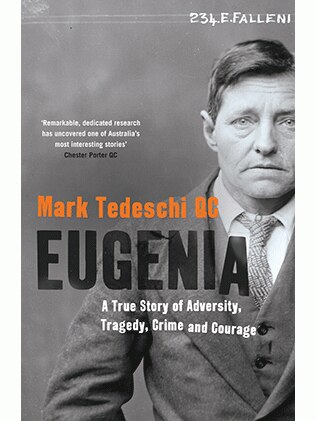
They proceeded directly back to the Central police station to charge their suspect with the murder of Annie Birkett.
In the space of just a few hours, the persona of Harry Crawford, which had been so carefully crafted and successfully maintained for twenty-two years, had abruptly disintegrated, as he was forced to revert to his original identity as Eugenia Falleni.
Harry felt as though his inner soul had been ripped from within him. Eugenia was an alien presence that had ‘passed away’ years earlier and now she had been forcibly resurrected.
- This is an edited extract from Eugenia: A True Story of Adversity, Tragedy, Crime and Courage by Mark Tedeschi QC, published by Simon & Schuster
- This is an edited version of a story first published as part of a Daily Telegraph Crime Week series in May 2014
Originally published as Two-time husband Harry Crawford exposed as a woman, Eugenia Falleni, and convicted of murder


